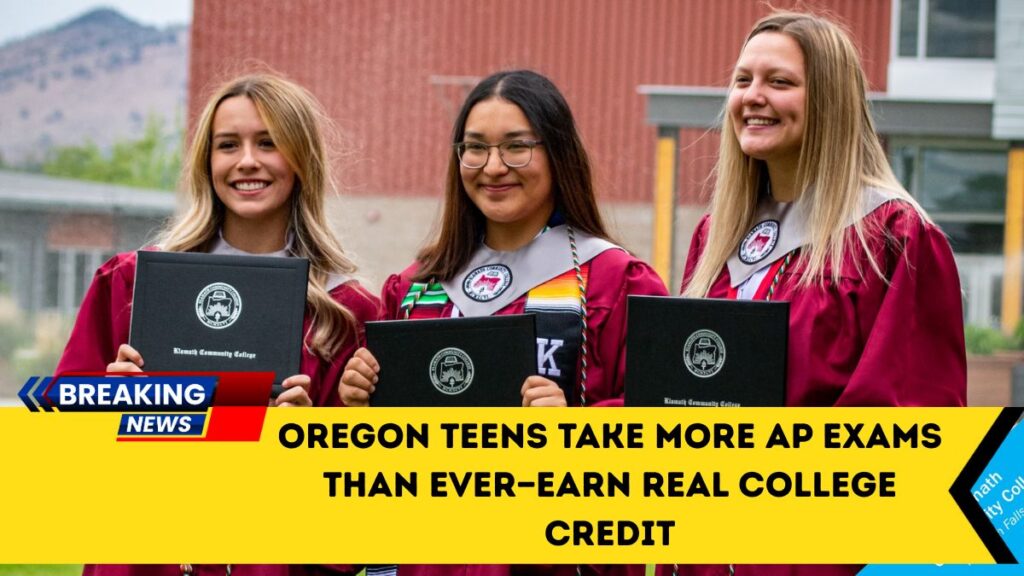In recent years, more and more high school students in Oregon are stepping up and taking challenging college-level courses while still in school.
They’re choosing to take Advanced Placement (AP) exams, earning real college credit, and saving money on tuition later. This is exciting for students, parents and educators because it means more young people are becoming college ready earlier.
What are AP Exams and Why They Matter
What is an AP Exam?
An AP exam is a test given by the College Board for high school students who take AP-level courses (college-type courses) in high school. These exams cover subjects like biology, history, calculus and more.
If a student scores high enough—usually a 3, 4 or 5—they may be able to get college credit when they join a university or college.
Why is this important in Oregon?
- Taking AP classes and passing the exams means students are exposed to higher level study, not just standard high school work.
- Earning college credit early can help students save money on future tuition.
- It shows students are more prepared for college work ahead of time.
The Numbers in Oregon
Here are some clear figures to help understand the changes:
| Year | Number of Students Taking AP Exams | Approximate Number of AP Exams Taken | % Scoring 3-5 (college-credit range) |
|---|---|---|---|
| 2019 | ~19,500 | ~32,000 | (data not given) |
| 2025 | ~22,000 | >37,000 | ~72 % |
In 2025, nearly 22,000 Oregon students took over 37,000 AP exams. Of those, about 72 % received scores of 3, 4 or 5 — which often count for college credit. Compared to just one year earlier, this is nearly an 18 % increase in the credit-bearing score rate.
Also, the number of exams taken has grown by 70 % since 2021, meaning more students are stepping up to AP work.
How Students and Schools Are Benefiting
College credit savings
At Oregon’s community colleges and public universities, a typical 4-credit class costs between $375 and over $1,000. So when students earn credit through AP exams, they can save significant money right away.
School programs supporting growth
Oregon state officials point to two key supports:
- Measure 98 and the High School Success Initiative (both passed in 2016) helped schools offer more AP classes, dual-credit courses and IB programs.
- A state fund helps students from low-income families pay the AP exam fee (about $99 per exam).
Because of these, more schools in Oregon are offering AP and challenging courses, and more students are able to take them even if money is tight.
Gains Among Under-Represented Students
Good news — the rise in AP participation and success is especially strong among students who have often been under-represented in advanced courses.
- Among Black and African American students in Oregon, AP participation grew about 16 %, which is almost double the growth compared to the overall student group.
- The share of Black students getting the credit-bearing scores (3-5) grew by about one-third.
- Among Hispanic and Latino students, AP test-taking rose by 7 % since 2024, and the number of those getting 3-5 scores grew by nearly 18 %.
Despite these gains, Oregon still lags behind national averages for AP participation among Black/African American students and Latino/Hispanic students.
Why This Still Matters
Even with the gains, there are things to keep in mind:
- While more students are doing AP work and doing well on tests, Oregon still has lower participation compared with the national picture among certain groups.
- Schools and families working together matter a lot — giving students opportunity, support and access leads to real growth.
- Earning college credit early doesn’t guarantee college success, but it does give a strong head-start and builds confidence.
Oregon’s high school students are making powerful strides in the world of advanced coursework by taking more AP exams and earning college credit like never before.
This movement means students are not just staying in high school—they’re stepping into college-level thinking, saving tuition, and proving that they can succeed at a higher level.
With strong support systems in place and growing success among under-represented groups, the future looks brighter for more Oregon learners. The growth shows that when schools, students and families work together, big goals become possible.
